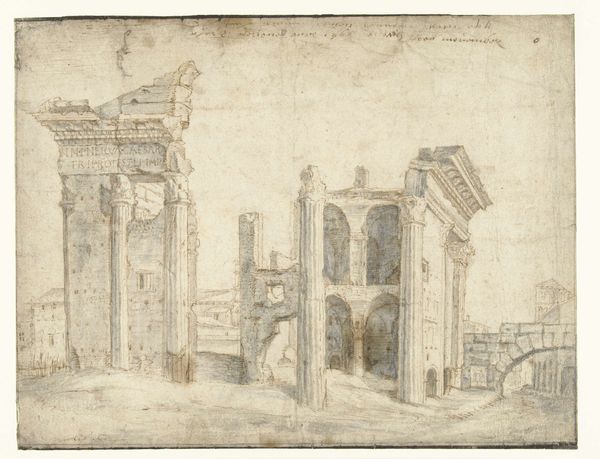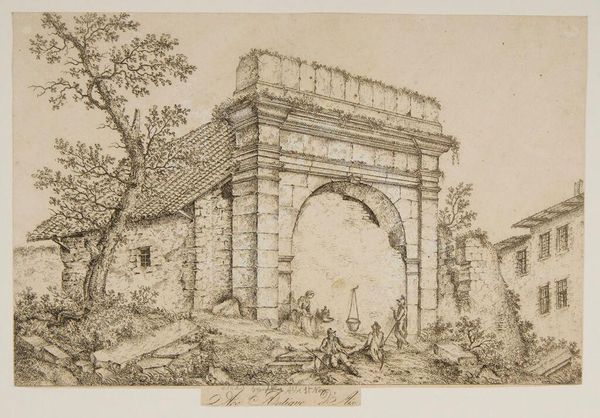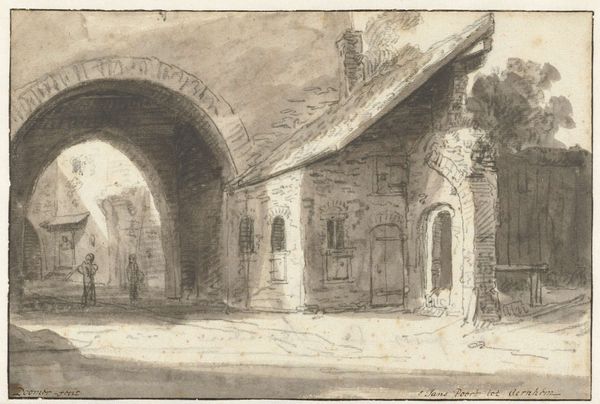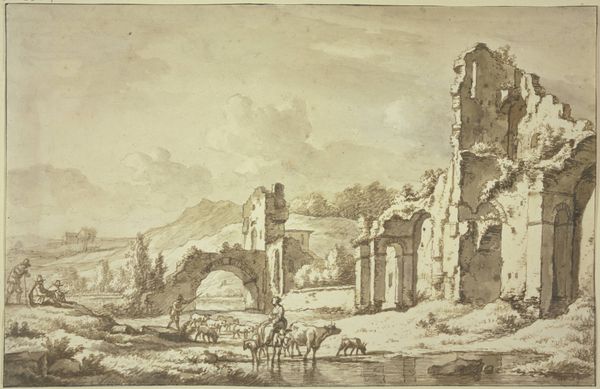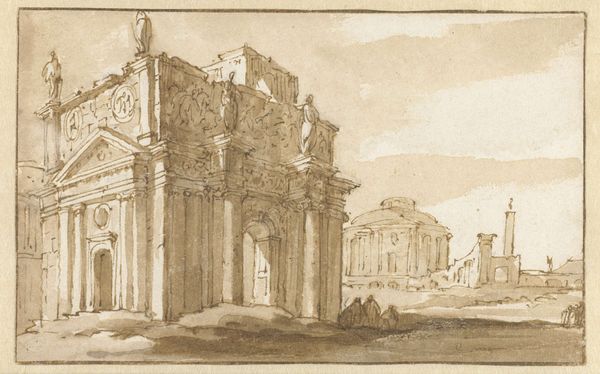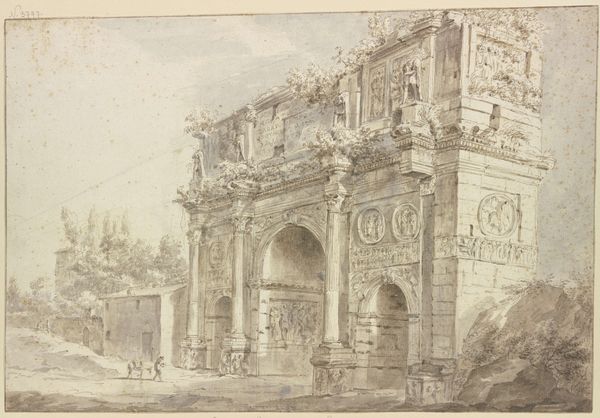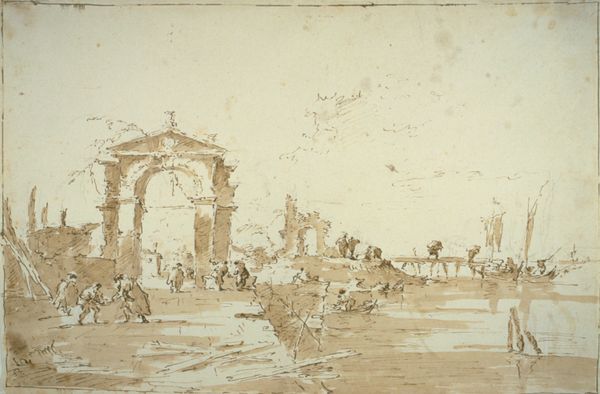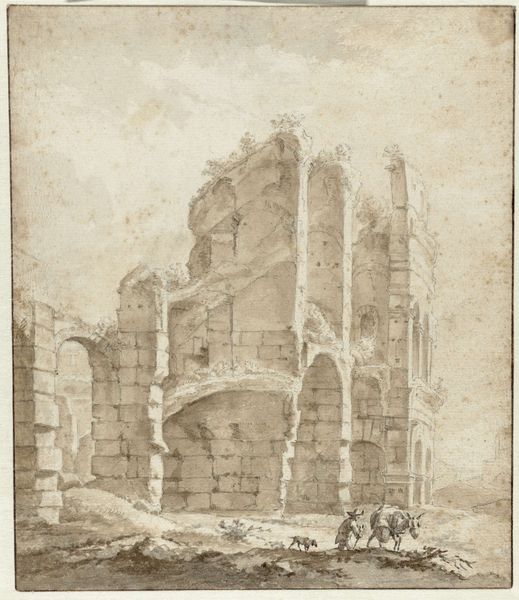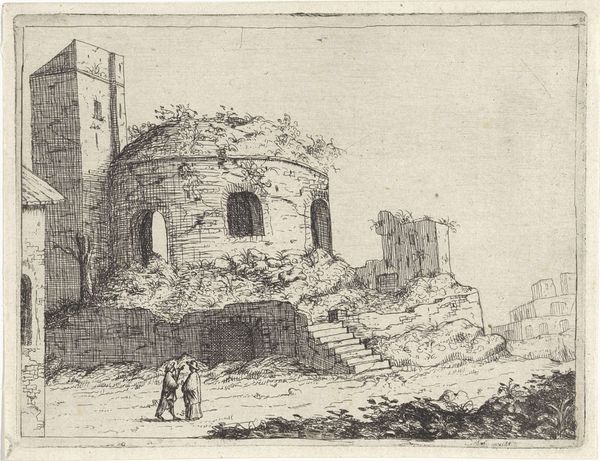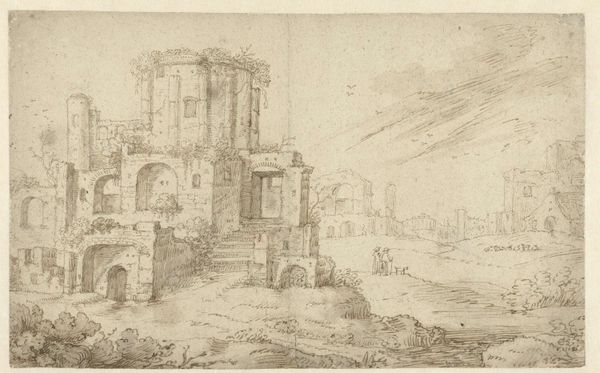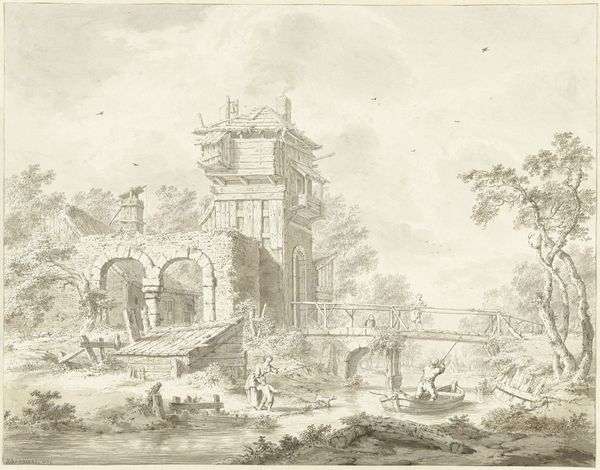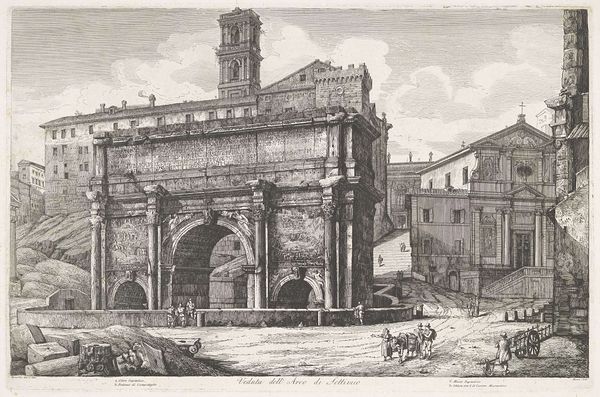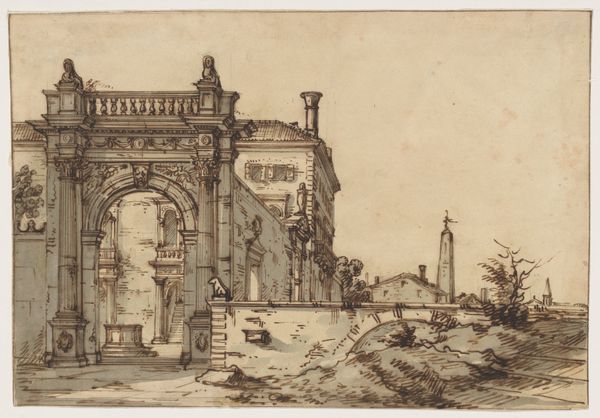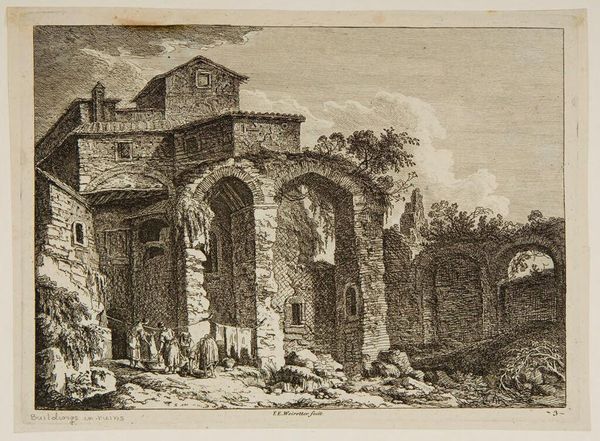
drawing, print, ink, engraving
#
drawing
#
ink painting
# print
#
landscape
#
etching
#
romanesque
#
ink
#
cityscape
#
engraving
Copyright: Public domain
Curator: Oh, it's magnificent, a sepia dreamscape. Jan Brueghel the Elder gives us "The Arch of Septimius Severus Seen from the East" using ink in both drawing and engraving techniques. I get a quiet melancholic feeling. It’s both grand and…utterly ruined. Editor: Yes, the scene whispers of both power and decay, doesn’t it? Notice how the arch, once a symbol of imperial might, is juxtaposed against the humble detritus in the foreground—broken stones, perhaps abandoned carts. Curator: Exactly! It's like a stage setting where the drama's long over, only echoes remain. I find the Romanesque details fascinating. The eye travels across the composition through line and shadow. Are we invited to romanticize what came before? Editor: Perhaps. I'm struck by the tower that rises unexpectedly from the arch's side. That wasn't original to Septimius Severus, I imagine? Symbols of empire become palimpsests, each layer writing over the one before. Note the column placement...very symbolic. Curator: I wonder if it represents later construction of mediaeval influence over classical? You're right about the palimpsest of power! And there's a human element—those small figures near the distant building, they suggest the continuity of life amidst the ruins. How about the wheel to the lower left? Editor: The wheel... Yes. It’s about transience, the turning of fortune's wheel. An allusion to mortality, the ephemeral nature of power itself. Wheels that cease turning also reference the death of commerce and trade. Consider how we imbue symbols with modern interpretations based on our experience and awareness. Curator: Well said! What else catches your attention, icons-wise? The shadows? They seem…ominous in a lovely kind of way. Editor: Indeed. Shadow in art often symbolizes the unknown, the unconscious. Here, it suggests what lies beneath the surface of history: the forgotten stories, the unspoken traumas that monuments try to bury. Curator: A compelling image. For me, the work feels more than historical. It feels intensely personal, like the artist saw something of himself—or perhaps, ourselves—in these crumbling stones. What better subject to look at history and time, and art with a deeply pensive mind? Editor: Ultimately it invites us to ponder not only Rome’s grand narrative, but also the stories we project onto its ruins; that visual interplay across eras.
Comments
No comments
Be the first to comment and join the conversation on the ultimate creative platform.
